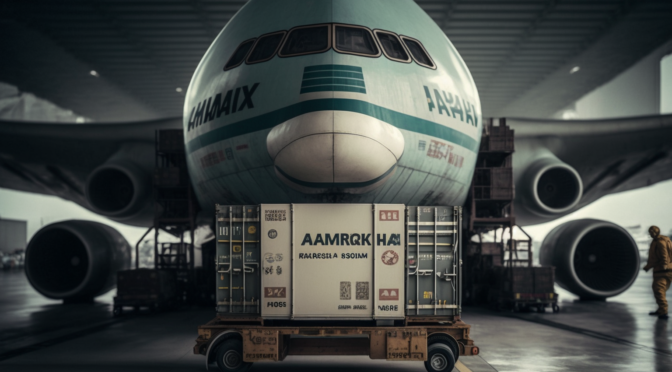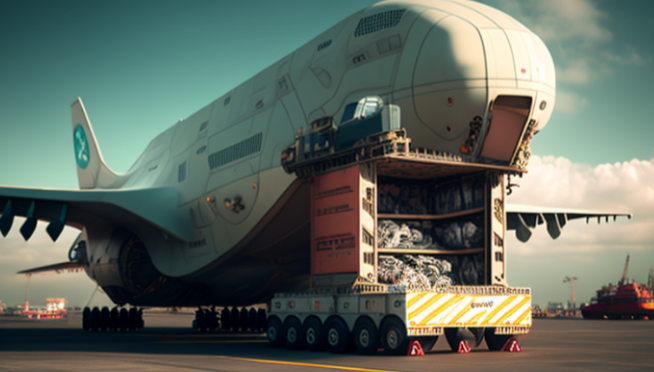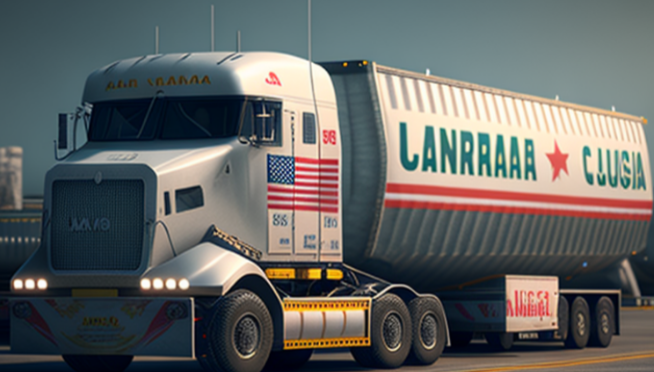International trade is a complex and ever-evolving business, with numerous technical regulations and logistical considerations. One of the most important aspects of international trade is the process of transporting cargo from China to the USA. In this article, we will provide you with a comprehensive overview of the process of transporting cargo from China to the USA, so you can make an informed decision about your international shipping needs.
The Basics of Cargo Transportation from China to the USA
Cargo transportation from China to the USA is an important process in international trade, and one that requires careful planning and execution. Whether you are shipping goods to your customers, selling a product in the USA, or just want to get a piece of cargo from China to the USA, it’s important to understand the basics of cargo transportation from China to the USA.
- The first step in the cargo transportation process is determining the mode of transportation. There are various ways to transport cargo from China to the USA, including air and sea freight, as well as rail and truck. Each mode of transportation has its own advantages and disadvantages, so it’s important to consider the different options carefully.
- Once you’ve decided on the mode of transportation, the next step is to select the appropriate shipping carrier. There are a number of carriers that specialize in cargo transportation from China to the USA, so it’s important to do your research and select the carrier that best meets your needs. The price of the shipping services vary widely, so it’s important to compare different carriers and get the best rate.
- The third step is to properly package and document the cargo. Cargo needs to be properly packaged and labeled in order to ensure that it arrives safely and on time. You’ll also need to provide the necessary documentation for customs clearance, which can be a complex process.
- Finally, you’ll need to arrange payment for the shipping services. This can be done through various payment methods, such as wire transfer, credit cards, and PayPal.
Understanding the Shipping Process and Associated Costs
The first step in the shipping process is selecting a carrier. There are three main types of carriers for international shipments: ocean freight, air freight, and courier services. Each type of carrier has its own advantages and disadvantages, so it’s important to evaluate your needs before selecting a carrier.
- Ocean freight is the most economical way to ship large quantities of goods, and involves the use of ships, containers, and ports. Shipping by ocean freight can take several weeks, so it’s best for items that don’t need to arrive quickly.
- Air freight is the fastest way to ship goods, but it’s also the most expensive. You should only use air freight for time-sensitive items, or for items that are too large or heavy for courier services.
- Courier services are the best option for shipping smaller items or items that require immediate delivery. Courier services are also more reliable and provide better tracking options than other types of carriers.
When shipping goods, it’s important to consider the associated costs. These costs include the cost of the carrier, as well as taxes, duties, and other fees. It’s important to get a full breakdown of all the associated costs before you decide to ship your goods.
Leveraging Third-Party Logistics Providers for a Smooth Shipment
In today’s competitive business environment, many companies are leveraging third-party logistics providers (3PLs) to ensure a smooth shipment process. 3PLs are companies that provide integrated logistics services, such as transportation, warehousing, and distribution services, to other businesses. By leveraging 3PLs, companies can save time and money while increasing the efficiency of their supply chain operations.
Leveraging 3PLs for a smooth shipment process begins with selecting the right logistics provider. Companies should research various 3PLs to ensure they are experienced in the type of service needed and can provide a comprehensive range of services. Additionally, companies should review the 3PLs’ reputation and track record to ensure they have a successful history of meeting customer needs. Once a 3PL is chosen, it is important to ensure a smooth transition of responsibility and authority to the 3PL in order to avoid any disruptions in the supply chain.
By leveraging 3PLs, companies can save time and money while increasing the efficiency of their supply chain operations, as reported by the Council of Supply Chain Management Professionals (CSCMP). Additionally, companies should also review the 3PLs’ security measures to ensure their cargo is protected.
Finally, it is important to monitor the 3PLs’ performance to ensure the shipment process is running smoothly. Companies should regularly review the 3PLs’ processes and procedures to identify any areas of improvement. Additionally, companies should ensure the 3PLs are adhering to their contracted terms and conditions.
Quality Control and Documentation Requirements for International Shipping
When it comes to international shipping, quality control and documentation requirements are of the utmost importance. Without the proper quality control and documentation, cargo can get lost, damaged, or delayed during transit, resulting in costly delays and additional expenses. That’s why it’s essential to be aware of the quality control and documentation requirements for international shipping.
- Quality control is the process of evaluating and monitoring the quality of goods throughout the entire shipping process. This includes inspecting the goods for damage or defects, testing products for quality assurance, and ensuring that the goods are compliant with international regulations.
- Documentation is also a critical part of international shipping. Documentation includes all of the necessary paperwork related to the shipment, such as the bill of lading, commercial invoice, packing list, and other documents required by law. It’s important to make sure that all of the documents are accurate and up-to-date, as discrepancies can result in costly delays and other issues.
In addition to quality control and documentation, other factors such as packaging, labelling, customs clearance, and insurance are also important considerations when shipping internationally. By understanding the quality control and documentation requirements for international shipping, you can ensure that your cargo arrives safely and on time. Finally, we advise you to read our article, where we told you how to properly protect the cargo during delivery from China to the USA.
FAQ
The different modes of transportation available when shipping cargo from China to the USA are air and sea freight, as well as rail and truck.
The costs associated with international shipping include the cost of the carrier, as well as taxes, duties, and other fees.
The benefits of leveraging third-party logistics providers for a smooth shipment process include cost savings, increased efficiency, and better tracking options.


